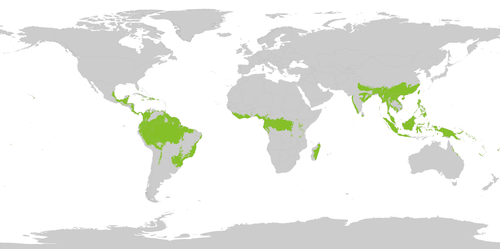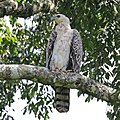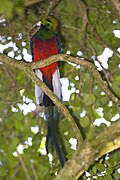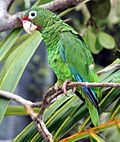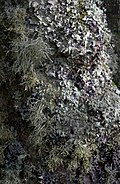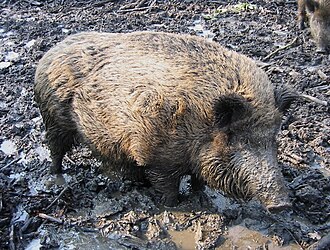AY Honor Rainforests Answer Key
1
Rainforests are forest communities, which receive heavy rainfall and are home to half of all terrestrial animal and plant species (including two thirds of all flowering plants). The amount of sun in the layers of plants is important to determine what is able to grow.
2
- NOTE
- For hands-on Pathfinders, have them mark the average depth of rain on the wall for each kind of forest and then stick their hand in a bowl of water that is 45 degrees and 80 degrees to feel the difference in average temperature of each climate.
Temperate rainforests (Tropical dry forest)
Temperate rainforests receive 55 inches of rain each year with about 6 months of a dryer season. Average temperatures of 39-54F. Leaves often fall off during the dry season. Canopy covers 70 percent of the sky. They are found between polar and equatorial regions.
Tropical rainforest (Tropical wet forest)
Tropical rainforests receive 78 inches or much more rain each year with average temperatures between 77-84F year round. Vertically layered forest because of competition for light in the thick forest. Trees usually do not lose their leaves. Found mostly in the equatorial regions
3
The equator is heated by direct sunlight. As air rises, the water vapor cools and condenses and falls as rain causing the tropical rainforest. This is why tropical rainforests are mostly found along the equator (see the pattern labeled "Hadley cells" in the diagram). The drier air moves north and south of the equator and falls, causing deserts to form. Similar convection currents occur at 60 degrees north and south causing the temperate rain forest. This is why temperate rainforests are mostly found between the poles and the equator (see the pattern labeled "Ferrel cells" in the diagram).
Irregularities in the general pattern described above can be caused by mountains and coastlines. Here, the air cools as it rises, allowing water to condense and fall as rain.
4
- D. Emergent layer
- Trees that grow above the closed canopy to heights of 150-180 (45-55m) and sometimes even 230-260 feet (70-80m)!
- C. Canopy layer
- trees that cover the 2 lower layers, most diverse layer, about 100-150 (30-45m) feet tall
- B. Understory layer
- layers of sub-canopy trees with large leaves to capture what little bit of sunlight comes through, shrubs, and woody vines; nothing usually grows more than 10ft (3m) high
- A. Forest floor
- layers of shrubs and herbs and small non-woody plants. Receives very little sunlight so it’s very clear for animals to move around.
5
- A: Seedlings regenerate in shade and natural openings due to a rich and moist environment.
- B: When a tree falls, it can open up a gap in the trees to allow sunlight in to help these seedlings grow taller.
- C: Nurse Logs are fallen and decaying trees that provide nutrient-rich locations for new trees to grow.
This YouTube video may help to show how a gap opens up in the forest for sunlight to come in, even though tree cutting isn’t promoted.
For hands-on learners, try making a nurse log out of clay or some other materials.
6
There are thousands of species of birds that live in the rainforest. Here are a few:
Here's a video featuring several species:
7
Just as with birds, there are many other animals that live in the rainforest. Here are a few:
8
Broadleaf evergreen trees dominate tropical rainforests.
Conifers are common in temperate rainforests.
NOTE: For visual learners, let Pathfinders draw an example from each kind of rainforest.
9
An epiphyte is a plant that grows on another plant but does not hurt the plant. It gets its nutrients from the air, rain, and sometimes from accumulating debris. These are very common in the rainforest. There is a very diverse variety and they grow in tropical rainforests, often in the canopy and emergent layer.
NOTE: If Pathfinders choose to make a plant collection, most of these are easy to find at a larger grocery store (or maybe your backyard if you live in a tropical rainforest). If they don’t choose a collection, they may still enjoy seeing a live plant as an example of how it “hangs on” to another plant.
10
There are many invasive species throughout different rainforests. Here is just one example:
The Wild Boar comes from Europe, Asia, and the Mediterranean. It is transmitting diseases to local humans and is destroying local plants and crops which also affects the animals. The Wild Boar populations have been increasing in many places such as Australia, the United States, and the Amazon rainforest.
11
- Vast forests for outdoor recreation and ecotourism
- Lots of fresh air (oxygen)
- Stores carbon to help reduce the greenhouse effect
- Climate regulation
- Fruit such as bananas, mango, papaya, yams, macadamia, avocado, sugarcane
NOTE: Pathfinders might enjoy having a few food samples or seeing a few pictures from a rainforest tour.
12
Due to habitat loss, these are some ways to sustain what is left of the rainforests. It’s important to preserve the rainforest to help our climate, to protect biodiversity, and also for the sake of the indigenous peoples that make the rainforest their home.
- Visit a rainforest. Ecotourism helps local people make money from the rainforest without destroying it, so they are more likely to preserve the forest.
- Donate money to help conserve wildlife in these areas.
- Avoid buying products that were taken from rainforests by an unsustainable method.
- Tell others about what you have learned about the rainforest.
- Don’t keep pets that belong in the rainforest. It disrupts the ecological balance.
13
Here is one example:
A nurse log is a fallen and decaying tree that provides a nutrient-rich location for new trees to grow. This can happen in our lives as well. We all have sin in our lives and a life that needs to die so we can live like Jesus. Jesus will help us have a new life and grow beautiful things despite our pasts. We can have a more abundant life when we die to self.
2 Corinthians 5:17 - “Therefore, if anyone is in Christ, he is a new creation; old things have passed away; behold, all things have become new.”
14
14a
14b
14c
If you are planning to visit a zoo or aquarium, be aware that there are various honors that have requirements which can be met by visiting a zoo or aquarium. Individuals can work on multiple honors in one visit, or parts of your group may work on different honors during the same visit.
Here is a list of honors which have requirements that can be met by visiting a zoo or aquarium:
14d
14e
14f



